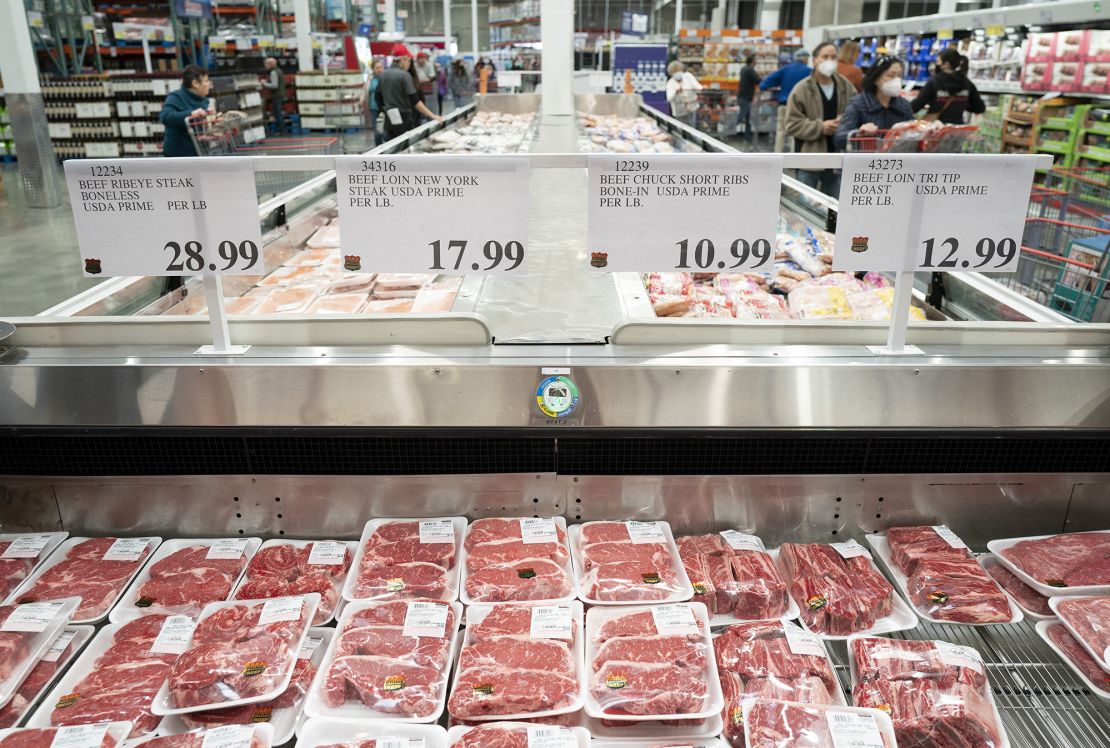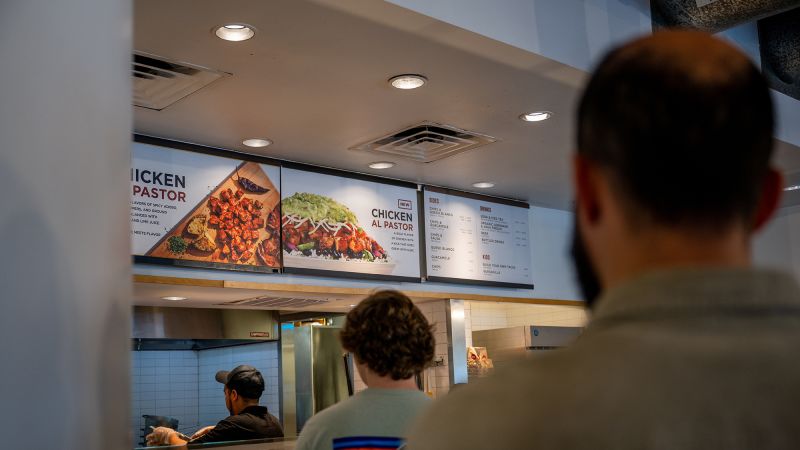If you’re watching your budget, it might be time to skip the drive-thru and head to the supermarket.
In the 12 months through October, higher restaurant prices drove food prices above overall inflation, even as grocery prices were relatively low.
For the year, grocery prices rose 2.1%, according to Consumer Price Index data released Tuesday by the Bureau of Labor Statistics. But menu prices were up 5.4%, driven largely by a 6.2% rise at limited-service restaurants, which include fast food and fast casual spots. At full-service restaurants, where servers take your order at the table, prices were up 4.3% for the year, according to the BLS.
Food altogether rose 3.3%, just above an overall price increase of 3.2%.
Many fast food and fast casual places say they’ve seen some benefit from customers trading down from pricier options. For those businesses, higher prices have not led to lower sales.
Chipotle, for example, said in October that it would raise prices again. The year before, it had said prices were up about 13% annually. And when the company reported earnings later that month, it warned that it might raise prices yet again in California, blaming a new law that raises minimum wages for fast food and fast casual workers in the state.
Still, Chipotle’s total revenues grew 11.3% to $2.5 billion in the quarter ending September 30, the company said. In that time, sales at restaurants open at least 13 months jumped 5%.
McDonald’s has also raised prices quite a bit. During an October analyst call, the company’s CFO said McDonald’s expected US prices to be up over 10% for the year. Still, at McDonald’s US locations open at least 13 months, sales grew 8.1% in the quarter.
For a while, grocery price increases were outpacing menu price increases, helping restaurants make the case that their meals were a good value. That’s no longer the situation — but some grocery items did notch higher increases, particularly in the meat aisle.
Over the course of the year, uncooked beef steaks rose 10.6%, with uncooked beef roasts rising 9.7% and uncooked ground beef jumping 7.9%, as the US cattle supply remained tight. Pork chops got 4.3% more expensive, and hot dogs went up 4.9%. Poultry rose 1.1%.

Elsewhere in the grocery store, sugar spiked 8.8%. Frozen fruits and vegetables together rose 8%, and bread prices jumped 6.3%.
Many items got cheaper, however.
Eggs, once the poster-child for massive price increases, were down 22.2% for the year as US egg supplies increased. Fresh fish and seafood dropped 3.6%.
In the produce aisle, lettuce dropped 4.5%, apples declined 3.9% and potatoes fell 3.3%. And on dairy shelves, butter fell 3.7%, cheese was down 1.9% and milk declined 1.6%.
From September to October, adjusted for seasonal swings, many individual items got pricier in the store.
Grocery prices rose 0.3% and menu prices rose 0.4% in that period. At limited-service restaurants, prices were up 0.5%. Altogether, food prices ticked up 0.3%, while all items remained flat.
That month, uncooked beef roasts rose 4.1%, and uncooked ground beef went up 1.5%. Pork chops rose 3.5%, and bacon went up 1.8%. Hot dogs jumped 2%. Poultry rose slightly, 0.3%. And though eggs are down quite a bit over the course of the year, they were up 0.1% in October.
Citrus fruits rose 2.9%, butter jumped 2.1% and sugar rose 1.6%. Bread and milk each got 1% more expensive and flour rose 0.9%.
Some items did get less expensive, particularly in the produce section.
Apples plunged 7.9%, potatoes dropped 2.7%, tomatoes fell 1.7% and lettuce went down 1.1%. Rice got 0.9% cheaper, and fish and seafood slipped 0.1%.
On a sweet note, ice cream dropped 1.4%, and packaged cookies fell 1.1%.
Read the full article here




